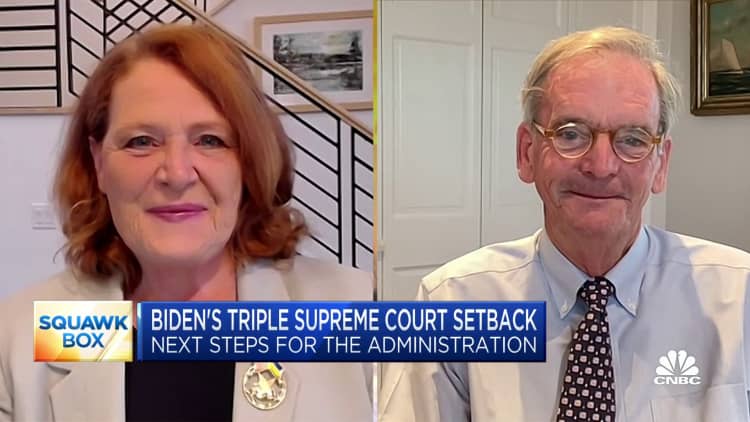[ad_1]
Damircudic | E+ | Getty Images
The looming end of a pandemic-era pause to student loan payments and interest puts a spotlight on a big difference between two types of debt: subsidized and unsubsidized loans.
Interest accrual is among the primary differences between the federal loans — also known as Stafford Loans — which are for the cost of higher education.
How interest accrues on subsidized, unsubsidized loans
Direct Subsidized Loans are available to undergraduate students who demonstrate a financial need.
They don’t accrue interest while a borrower is in school (at least half-time) or during a six-month grace period after leaving school. The loans also don’t accrue interest during deferment, a period when payments are postponed due to unemployment or economic hardship.
The U.S. Department of Education pays the interest on subsidized loans in these instances.
However, that protection isn’t available for Direct Unsubsidized Loans, which are available to a broader group of borrowers (including graduate students) and are not based on financial need.
Interest on unsubsidized loans starts accruing immediately and borrowers are responsible for interest amassed during all periods — making this debt more expensive than subsidized loans.
In some cases — after a deferment, for example — unpaid interest on unsubsidized loans may “capitalize.” When this happens, unpaid interest is added to the loan’s principal balance; future interest is then calculated off that higher principal, thereby increasing future interest payments.

Borrowers can carry both subsidized and unsubsidized loans, which have different borrowing limits.
About 30.3 million borrowers had subsidized Stafford Loans as of March 31, with an average balance of $9,800, according to Education Department data. About 30.7 million people have an unsubsidized loan, with an average balance of about $19,000, according to the Education Department.
(The term Stafford Loan is an informal way of referring to Direct Subsidized Loans and Direct Unsubsidized Loans made via the Direct Loan Program. It also refers to subsidized or unsubsidized Federal Stafford Loans made via the Federal Family Education Loan, or FFEL, program.)
How the payment pause, interest waiver affected loans
The payment pause and interest waiver has been in place for more than three years, since the onset of the pandemic in 2020.
During that time, interest wasn’t accruing on any loans — meaning unsubsidized loans essentially became subsidized debt for some borrowers.
However, interest will start accumulating on borrowers’ debt again on Sept. 1, and monthly payments will resume in October.
The interest waiver cost the federal government about $5 billion a month.
Some financially strapped borrowers may now wonder if it’s a good idea to pursue deferment or forbearance as payments resume, said Mark Kantrowitz, a higher education expert. But “you’re effectively digging yourself into a deeper hole” by pursuing these avenues, Kantrowitz said, since interest will typically be accruing during deferral or forbearance.
(There are exceptions, such as if a subsidized loan is in deferment or if either type of loan is in deferment due to active medical treatment for cancer.)
Pursuing an income-driven repayment plan, which caps monthly payments, is generally a better option for borrowers, unless the financial difficulty is short term in nature, Kantrowitz said.
“In general, you don’t want to use deferment or forbearance if you’re capable of repaying the loan,” he said.
[ad_2]

